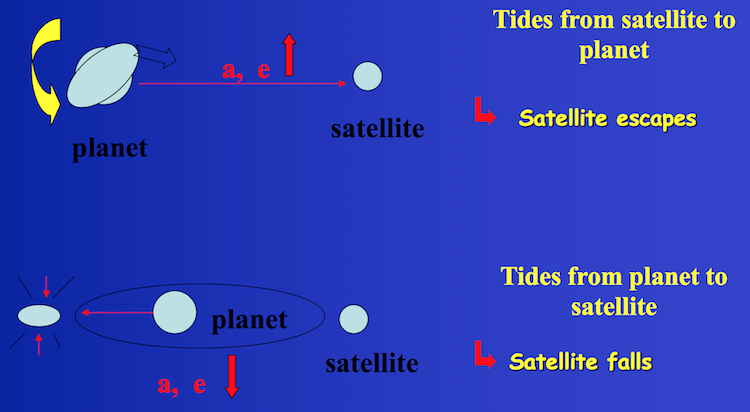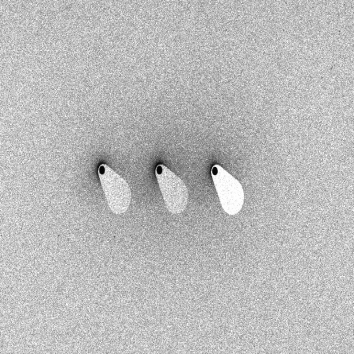Natural satellites
One of the main interest in increasing the time interval for which we have observations, is to allow the quantification of effects of tides. These effects, due to energy transfers between satellite and planet, lead to orbital accelerations or decelerations. The variations in motion generate cumulative effects that become "easily" measurable over a century of observations. The old photographic plates are therefore essential for this research.
 |
||
|
Influence of tides on satellite dynamics. |
Planets
Planets are difficult objects to directly observe, especially because of their apparent brightness that disturbs images. Planetary dynamical models are adjusted with astrometric positions derived from those of natural satellites. We have shown that old observations, unfortunately inaccurate and used in the adjustments, could introduce biases in the results (V. Robert et al., 2015, 2016). A new reduction of old photographic plates is therefore essential to correct those already used, to complete and improve the existing models, to allow a better estimation of the internal structures.
 |
 |
|||
| The Jovian system (5 exposures). Gaia stars are available around the plate centre. | The Martian system (3 exposures) within a metallic filter allowing for satellite observation, close to the planet. |